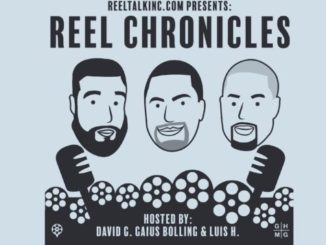As a horror fan, so much of my childhood was defined by A Nightmare on Elm Street. Even though Halloween has been my favorite horror film of all time for as long as I can remember, A Nightmare on Elm Street was the one film I would watch consistently. I’m pretty sure I wore out my VHS copy that I owned and it was one of those films that I was always told to bring over to a friend’s house whenever I was staying overnight.
The first film set a standard that was so high that it would be near impossible to top. Director Wes Craven jumped directly into our psyche and toyed with our subconscious enough that he made us afraid to fall asleep. That’s the skill of a true horror master and it’s a signature of some of his best films.
With a success like A Nightmare on Elm Street a sequel is inevitable but not in the mind of its creator. The first film was a one-off idea and Craven wanted to move on to other projects. New Line Cinema had other plans in mind and they knew after the original grossed $25 million on a $1.8 million budget, they had to keep this thing going: with or without Wes Craven.
The end result was A Nightmare on Elm Street 2: Freddy’s Revenge which has been the subject of polarizing opinion since its release in 1985. The only signature player to come back was Robert Englund as Freddy Krueger and the lack of personal creative touch grows evident as the film progresses. It maintains a sense of dark atmosphere that the first film possessed but it lacks a certain amount of passion.
Despite the lukewarm attention from critics and fans, the film was still a hit with a gross of $29.9 million on a $3 million budget. The lesson learned from the first sequel was that you couldn’t just take Freddy and throw him into a new story that didn’t feel necessary or relevant. It had to maintain some connection to the original that went beyond using the same house and setting. The terror and the imagination behind it needed to be genuine.
This brings us to the sequel that celebrates its 30th anniversary today, A Nightmare on Elm Street 3: Dream Warriors. I mentioned that I would watch the first film frequently as a child but this second sequel is the film in the franchise I’ve probably watched the most. There is something about it that finds the right balance between the subconscious horror of the first film while delicately balancing human drama with a dash of dark humor. The characters, a gaggle of troubled misfit teens, are relatable and the return of a key player from the first film seals the deal to make this the best sequel of the franchise.
After the second film, Wes Craven became involved with the third installment when he wrote out the original script along with Bruce Wagner. Oddly enough, one of his original ideas for the third film was to have Freddy invade the real world and torment the actors filming a new film in the franchise. At the time New Line Cinema scoffed at the idea but as we know they came around when Craven ended the franchise for himself as he knew it with Wes Craven’s New Nightmare.
Since the idea was turned away, the writing duo began what would be the shell of what the film would become. In their original script Nancy Thompson, our heroine from the first film, was not a dream expert nor any kind of mental health professional. Other differences on display in the original script had Kristen staying in the institution for only a while and she had a father, Neil’s last name was Guinness and he was much younger, Dr. Simm’s last name was Maddalena, Taryn was African-American, Joey was the one who built the model of a house and had trouble getting around (although he did not use a wheelchair), and Philip was a thirteen-year-old.
In addition, Will’s name was originally Laredo, he had long hair, did not use a wheelchair, and was the one who made the clay puppets. This script also showed the ranch house where Krueger was born and is the house that shows up in their dreams rather than the Elm Street house. Contrary to the film, Lt. Donald Thompson knows from the start that Krueger is real and still alive. He had been missing and Nancy was intent on finding him, she finds him and learns that he was obsessed with finding the Krueger house and burning it down. In the original script, there is a romance between Nancy and Neil and they eventually have sex. There are scenes and lines that are very reminiscent of the first film and there is no talk of Krueger’s mother having been a nun or Freddy being “the bastard son of a hundred maniacs”. Lastly, both Joey and Kincaid are killed and the deaths in this script were much more grotesque, with Krueger not as talkative and more vulgar.
The sense from the studio was that there were good ideas within the script but it was a tad too dark and needed some revisions. The film’s screenplay as we know it is credited to Chuck Russell and Frank Darabont, while Craven and Wagner receive story credit. I like to call the end result from the perfect storm of all of their ideas. Craven’s thumbprint is clearly on this film and it’s there just enough that it feels more like a logical continuation when compared to its predecessor. The ideas and changes from Russell and Darabont feel in line with what Craven may have been ok with while adding their own personal touch to the film. Their addition of more fantasy elements and a bit of dark humor is what sets the film apart and, for better or worse, would be pushed further in future installments.
A horror film is only as good as its characters and Dream Warriors arguably has the best ensemble of the entire franchise. Heather Langenkamp returning as Nancy Thompson is the true ingredient of success amongst the cast. One could argue she was a bit too young at the time to be a mental health expert but her mother hen role is believable considering what she went through at the hands of Freddy Krueger the first time around. Krueger and Nancy don’t have a ton of scenes together in the film but the ones they do have count because the history is palpable. That history is why her fate, in the end, works so well and why it still surprises. It’s poignant because we’ve watched them battle it out once before and it makes for a satisfying endgame.
The slew of new would be victims are also all likable in their own way. Patricia Arquette hits all the right notes as Kristen Parker. She’s instantly sympathetic and actually brings some believable nuances to her role. This isn’t a one-note horror performance and is a film debut that Arquette should be proud of. She also forms a solid connection with Heather Langenkamp that really becomes the heart of the film. They feel like kindred spirits based on this shared experience and it makes their scenes ring true.
The supporting players, also occupants of the Westin Hospital, include Ken Sagoes as the foul-mouthed but loyal Kincaid, Rodney Eastman as the mute Joey, Jennifer Rubin as the tough but vulnerable Taryn, Ira Heiden as the nerdy Will and Penelope Sudrow as wannabe actress Jennifer. All of these characters represent why this sequel tends to be the fan favorite worldwide. No matter your personality, there is someone in the bunch you can connect with. The central theme that they all are encountering this presence yet no one believes them is also relatable to any teenager who is crying out to be heard yet no one listens. There is something identifiable about everyone in the central cast and it’s something in horror we don’t see all that often. For this franchise, it’s probably the most realistic portrayal of teenagers and it’s definitely the most cohesive unit of the films.
There is no franchise with our man Robert Englund and he accomplishes something here that would propel him and the character into the pop culture stratosphere. In the first two films, Freddy Kreuger is more of background presence which is why he’s so frightening. The third film pushes him a bit more to the forefront but it’s just enough to not be detriment while showcasing signature characteristics that he would evolve in future films.
There is a darkness to the character still but also a wicked sense of humor. Look to the sleepwalking murder of Phillip which is wonderfully dark and grotesque and counteract that with the “welcome to prime time bitch” death of Jennifer. One represents the Freddy we came to know in the first film while the other showcases what Freddy would become. Some of his macabre darkness and sense of humor is on display at the same time. The “let’s get high” death of Taryn is creepy but also darkly funny (Freddy’s signature claws turn into hypodermic needles as he plunges them into the veins of Taryn, who is a former drug addict). It’s one of those situations that makes you think who comes up with this stuff but Englund always plays it to perfection. He gets Freddy and by the third film, I think they were a part of each other. He’s not acting, he’s simply being.
The success of A Nightmare on Elm Street 3: Dream Warriors is what sealed the deal for this becoming one of the signature horror franchises of the 80s. The film opened at number one at the box office and went on to gross an impressive $44.7 million on a $4.5 million budget. That means it performed better than the third installment of Halloween and Friday the 13th and it also was a critical favorite, something that their second sequels didn’t accomplish. The film is certified fresh on Rotten Tomatoes with 74% and most critics applaud its ingenious dreamscape, solid visuals, and believable characters. Of course, there is always a naysayer and the late Roger Ebert was definitely one. He gave the film 1.5 out of 4 stars and called ita “a slick horror film that never generates enough sympathy for its characters” (I guess he was watching a different film).
It’s nice to see that after all these years, the film still stands up. Other than the original, this is the one I pop into my BluRay player the most and it definitely still transports me back to the days when these films ruled my life. 30 years hasn’t stifled the film’s impact. It has only made it better.





